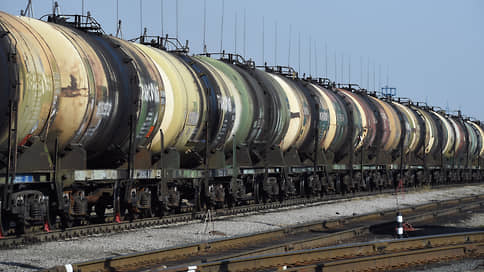Who to send for oil – Newspaper Kommersant No. 16 (7461) dated 01/30/2023
[ad_1]

As it became known to Kommersant, the largest oil companies are concerned about the increasing refusals of Russian Railways to accept oil products for transportation in an easterly direction. Companies fear that export difficulties could affect their production program. The situation may escalate after the EU embargo on Russian oil products comes into force in February, and subsidies for transporting fuel to the east come into effect from April.
Oil companies are complaining about the massive refusals of Russian Railways to permit the transportation of petroleum products in the east, sources told Kommersant in the industry. A number of large refineries faced such problems, including Omsk (Gazprom Neft), Kirishsky (Surgutneftegaz), Orsk (Forteinvest), TANECO (Tatneft), as well as Bashneft plants (part of the Rosneft). Kommersant’s sources say that “the issue has been repeatedly raised at the headquarters of the Ministry of Energy and the FAS Exchange Committee, but there is no decision.”
So, on January 23, the head of Gazprom Neft, Alexander Dyukov, “once again” informed General Director of Russian Railways Oleg Belozerov in a letter (Kommersant has a copy) about the problem of accumulating loaded wagons with products from the Omsk Oil Refinery that were not accepted for transportation. According to the top manager, about 30% of the refinery’s oil products shipped from the Kombinatskaya (Omsk region) and Sokur (Novosibirsk region) stations are intended for consumers in the eastern regions, but since the second half of 2022, the company “systematically faces problems in ensuring rail supplies “. The average number of wagons idle at loading stations on some days exceeded 400 units – 65% of the plant’s daily shipment and “is critical”, and in January the number of loaded wagons not accepted for transportation in the east direction “is steadily increasing.”
Mr. Dyukov believes that “such a significant accumulation of loaded wagons in conditions of limited infrastructure” threatens the company’s production and marketing program. He asks to “promptly” solve the problem by setting daily quotas for receiving wagons with oil products from the Kombinatskaya and Sokur stations in the east direction at the level of 220 wagons.
JSC Russian Railways assured that “they keep under special control and ensure the uninterrupted delivery of oil products in the eastern direction.” In the context of a shortage of carrying capacity of the BAM and the Trans-Siberian Railway, the acceptance of goods for transportation is “taking into account the priorities defined in the temporary rules of priority, where high value-added products, perishable goods, as well as any goods in domestic Russian traffic, have advantages,” the monopoly specified.
At the end of 2022, according to Russian Railways, it was possible to increase the volume of loading of oil and oil products to the Eastern landfill by 1.3 million tons, or 4.6%. “In January, the export of oil products to the east is stable, and its volumes generally correspond to the level of the same period in 2022,” Russian Railways emphasized. “In a number of cases, due to problems with unloading at port terminals, the company had to limit loading to them,” they admit there. “However, these restrictions do not apply to the transportation of vital goods, including oil products, to Russian regions, in particular the Magadan Region” .
So, they say in JSC Russian Railways, the consignee Niko-Oil DV LLC (Gaydamak station), with a processing capacity of 44 wagons, unloaded at the level of 21 wagons on average per day. In this regard, JSC Russian Railways was forced to limit the loading of all oil cargo from January 11 to 27. The consignee Transbunker-Vanino LLC (Vanino station) with a processing capacity of 139 wagons unloaded at the level of 62 wagons on average per day, VostokBunker CJSC (Blyukher station) – at the level of 81 wagons per day with a processing capacity of 100.
The Ministry of Transport noted that the approval of applications for the transportation of petroleum products is under the fifth stage of temporary rules on a par with domestic transportation of other cargoes and export non-energy cargoes. In 2022, the loading of oil and oil products on the domestic market increased by more than 2%, and for consumers in the Far East – by 11%, the ministry added. The FAS told Kommersant that, as an operational measure, the service offers to use the digital service of the OTP Russian Railways. The Ministry of Energy did not answer “Kommersant”.
The problem of receiving oil products for transportation in the east direction is of concern to independent operators of filling stations. “Since November, we have been seeing problems with shipments to the east,” confirms Rinat Fattakhov, vice president of the Russian Fuel Union. “There are massive extensions of exchange contracts for shipments over 30 days.” According to him, JSC Russian Railways coordinates applications (form GU-12) for shipments to a limited extent. Kommersant’s interlocutors in the industry fear that the problem will worsen after the EU embargo on Russian oil products comes into force on February 5, as well as the start in April of subsidies for the supply of fuel by rail to the Far East.
The situation on the network of Russian Railways in terms of car traffic management in January as a whole deteriorated significantly, especially at the Eastern training ground, says Mikhail Burmistrov, head of Infoline-Analytics. “Russian Railways JSC announced an increase in the carrying capacity of the Eastern landfill, however, apparently, it could not predict the growth in applications for the transportation of petroleum products in the direction of the ports of the Far East and provide an appropriate reserve,” the expert believes. According to him, the situation is complicated by the shortage of oil tankers on the network of Russian Railways due to a decrease in the speed of movement, an increase in the turnover of the car and the duration of downtime.
[ad_2]
Source link





